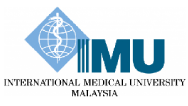E-cigarettes: Facts and legal status
Authors: Davendralingam Sinniah, Erwin Jiayuan Khoo.
ABSTRACT
The sale of tobacco-based cigarettes has declined in western countries, and ‘Big Tobacco’ is trying to make up the deficit in profits from the developing world. The recent introduction of e-cigarette, in which they have invested both their hopes and their finances, has been a boon to them as it serves to confuse smokers and non-smokers about the real issues relating to the toxicity, dangers, and the promotion of nicotine addiction especially among youths who have not previously smoked cigarettes. E-cigarettes cause inflammation and damage to epithelial cells in human airways and increased risk of infection. E-cigarette vapour contains more carcinogens like formaldehyde and acetaldehyde compared to a regular cigarette. Long-term vaping is associated with an incremental lifetime cancer risk. E-cigarettes are neither safe nor effective in helping smokers quit; there is enough evidence to caution children, adolescents, pregnant women, and women of reproductive age about e-cigarette’s potential for long term consequences to foetal and adolescent brain development that sub-serve emotional and cognitive functions. The nicotine effects that cause modification of late CNS development constitute a hazard of adolescent nicotine use. The American Heart Association (AHA), Food and Drug Administration (FDA), World Health Organisation (WHO) and two-thirds of the major nations in the world discourage the promotion of e-cigarettes as an alternative to proven nicotine-addiction treatments. Doctors, health care workers, and medical students should be armed with the facts about e-cigarettes, its dangers, and the legal status concerning its use, in order to be able to offer proper counselling to patients and adolescents, in particular, with special reference to the Malaysian context.
Keywords: E-cigarettes, nicotine addiction, cancer risk, brain development consequence, legislation.
Citation: IeJSME 2015 9(3): 10-19

